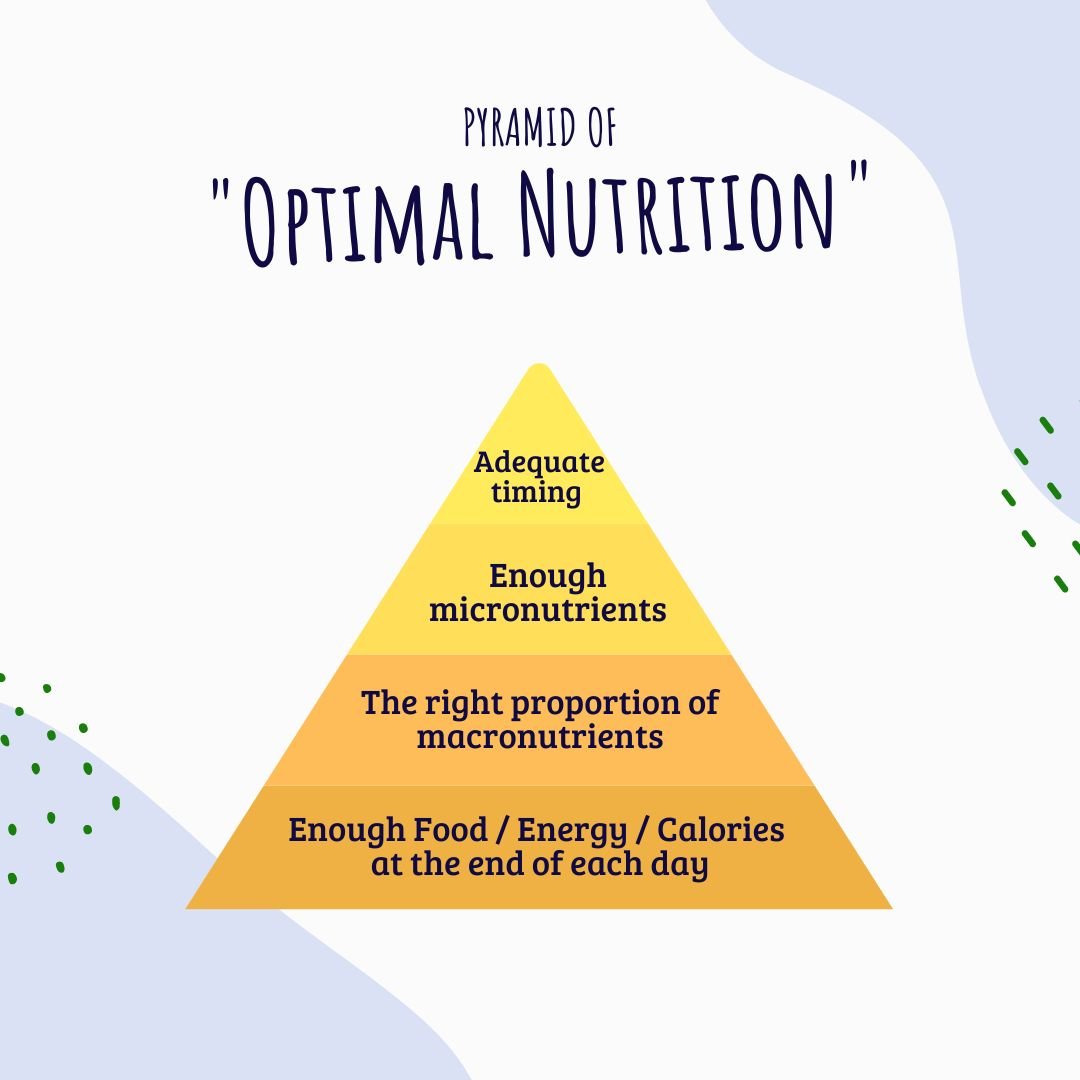I recently got to speak with a high school cross country team to help prepare them for fueling well during their season this fall. I loved talking with this group. I was a runner myself growing up who struggled to fuel well. In fact running cross country is, partially, what lead me to study nutrition and become a sports dietitian. Nutrition plays such a big role in the performance and health of an adolescent runner. It also, I have realized as I see lots of injured runners in the sports medicine nutrition clinic that I’m a part of, plays a big role in injury prevention in this group of athletes.
In putting my talking points together for this group, I knew I wanted two main outcomes: (1) understand the VALUE of optimal nutrition for performance and injury prevention and (2) Understand basic nutrition fundamentals so that they can put together great meals and snacks throughout the day each day that support not only performance and injury prevention but also growth and development.
As I started putting my thoughts together I realized that what I really needed to define before I dove into any other sport nutrition principles was this term “Optimal Fueling” or '“Optimal Nutrition”. I mean, to me, it sounds pretty “buzz wordy”, right? Sounds kind of fancy, but what the heck does it mean? So, I decided to spend a chunk of my talk defining these terms and then decided that I really think this deserves a post of its own here on the blog.
So many athletes are starting school this week or next week or they started last week. And don’t we all want to make sure our athletes are optimally fueling? We tell our athletes we want to see them incorporate good fueling strategies, but what does this mean? What is the priority? Where should our athletes start? So, sit tight as I try my best to briefly and succinctly explain and put context to this term, “Optimal Nutrition” or “Optimal Fueling” from my clinical experience.
The 4 Building Blocks of “Optimal Nutrition”
ENOUGH food/calories/energy in at the end of each day
This is the foundation of a good fueling plan for young athletes. If young athletes are not getting enough total food at the end of each day every day, they are (1) definitely not going to perform at their best and (2) putting themselves at big risk of injury.
An athlete can be intentional about getting carbs and protein and fat at each meal but, at the end of each day, if enough food/calories are not consumed to support activity + growth & development, the athlete is setting himself up for injury.
Injuries, like stress fractures, are serious and can take an athlete out of sport for months. These are typically caused by a number of factors, with one of the big factors being not consuming enough calories at the end of each day to support the basic needs of growth, development and daily life + the needs for sport and training. Getting enough calories at the end of each day is a big first step in the prevention of this particular injury.
Adequate macronutrients
After focusing on getting ENOUGH total food each day, young athletes can think about the form in which they are consuming and meeting those energy needs. Are they including carbs, protein and fat? An athlete deficient in carbs is likely going to be a super lethargic athlete. The athlete could also experience moodiness, muscle cramps or hitting a wall during practices and meets. An athlete needs protein spaced throughout the day to aid in things like muscle recovery, building and repair of any little tissue wear and tear that naturally occurs after workouts, or preventing illness. Remember to space the protein in moderate amounts vs trying to get a ton at one meal.
Adequate micronutrients
Next athletes can focus on those smaller but still very important nutrients. I typically focus on calcium, vitamin D and iron in the beginning because research and clinical practice has shown that these aid in performance and bone health in young athletes.
One reason I tell my athletes to focus on whole foods vs supplements is because if we focus on the protein powders, the shakes, the bars, etc. we could be falling short on these super important micronutrients found in whole foods that keep our bones strong and energy levels up!
Timing of meals & snacks
This top part of the pyramid, in my opinion, is like the icing on the cake. It’s really performance-focused. Once young athletes shows me they understand and can implement the first three tiers, then we get to focus on timing.
This is where real strategy comes into play and we talk about how to build the meals and snacks and where to put them based on timing of practices, warm-ups, games, meets and performances.
It’s difficult to talk about timing, though, when you don’t have a strong foundation and understanding of the first three tiers. And, when looking at overall big-picture performance and injury prevention for the child or teen athlete, timing is irrelevant if the athlete is not eating enough each day and therefore deficient in macro or micronutrients.
Adequate nutrition timing will make the biggest impact in a well fueled athlete!
I hope you find this helpful as your athlete heads into a new school year and another season of sports. As always, please reach out to me with any questions or if you would like to schedule a call to chat about working together.
Happy Fueling!
Taylor

